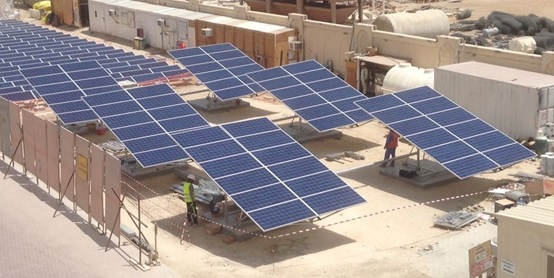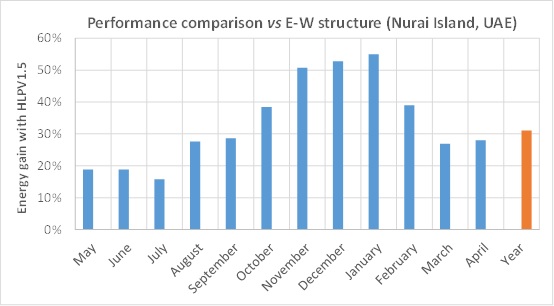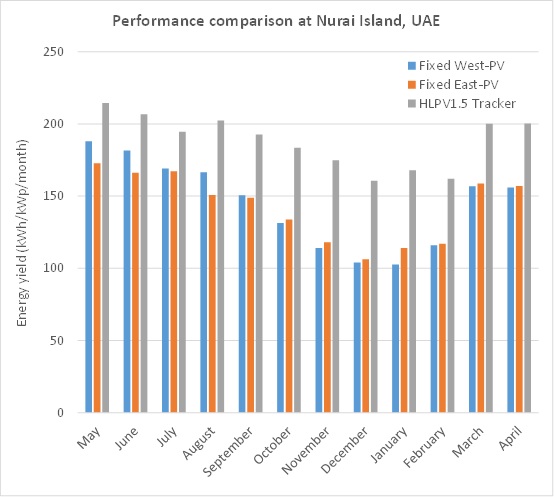
HeliosLite has developed a disruptive PV tracker based on a patent pending 1.5 axis kinetic capturing more energy than 1 axis horizontal trackers without sacrificing cost-effectiveness. This disruptive PV tracking solution boasts higher energy output than 1 axis horizontal trackers and is said to bring cost-effective tracking to decentralized PV plants. Field results attest to the energy boost versus fixed tilt and to the system’s robustness. The open back design and maximum power tracking algorithm make HeliosLite’s 1.5 axis tracker a perfect match with bifacial modules.
Problem
Unlock unlimited access for 12 whole months of distinctive global analysis
Photovoltaics International is now included.
- Regular insight and analysis of the industry’s biggest developments
- In-depth interviews with the industry’s leading figures
- Unlimited digital access to the PV Tech Power journal catalogue
- Unlimited digital access to the Photovoltaics International journal catalogue
- Access to more than 1,000 technical papers
- Discounts on Solar Media’s portfolio of events, in-person and virtual
Maximizing power output (MWh/MWp) drives lower the cost of energy and can bring even more value to projects with coupled to diesel generators, with variable feed-in tariffs or storage. Dual axis trackers and inclined 1 axis trackers increase output with much lower power density (MWp/Hectare) but do not always decrease LCOE due to the marginal cost increase. Furthermore, decentralized PV plants and difficult project sites do not have access to modular and cost-effective tracking solutions.
Solution
HeliosLite has developed a PV tracker based on a patent pending 1.5 axis kinetic capturing more energy than 1 axis horizontal trackers without sacrificing cost-effectiveness. The self-powered controller includes a power sensor, battery back-up and wireless communication to enhance the solution’s simplicity and ruggedness. The tracking algorithm uses input from power sensor to achieve maximum energy output. As measured in a pilot project near Dubai, HeliosLite’s 1.5 axis trackers have produced 31% more energy during the 1st year of operations versus the on-site East-West structures with seasonal variation decreased two-fold. By producing more energy throughout the day, HeliosLite’s tracker allows developers to optimize the total PV system investment to achieve a lower cost of energy.

Applications
HeliosLite’s 1.5 axis PV tracker solution addresses market segments starting from 4 kWp to multi-MWp projects where maximum energy output counts most (off-grid, hybrid, solar pumps, rural electrification, self-consumption projects with or without storage) and where current 1 axis horizontal tracking solutions are less cost-effective or not suitable (slopes, landfills, sandy soils, uneven terrains, snow regions, temporary installations…).
Platform
Wind tunnel tested and pre-certified under Eurocodes, each HeliosLite 1.5 axis tracker carries 12, 72 cell, PV panels driven independently or mechanically linked together in rows for a highly scalable tracking solution. The tilt angle can be optimized based on the project’s latitude by adjusting a single component. The system is said to be easy and quick to install without heavy lifting equipment. This movable tracker is compatible with multiple foundation solutions. Bifacial modules will be tested summer 2018.
Availability
Ready for delivery and can begin with benchmark trial projects from 24 kWp onwards.

In September, HeliosLite and Enerwhere will be conducting a webinar on increased energy output and reduced LCOE achieved by using 1.5 axis trackers vs fixed tilt based on 12 months of comparative data in Dubai, UAE. Register now.







